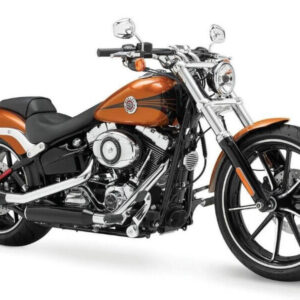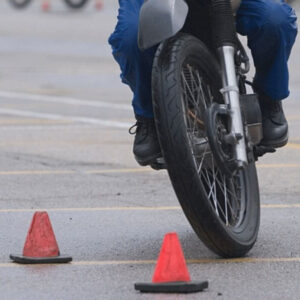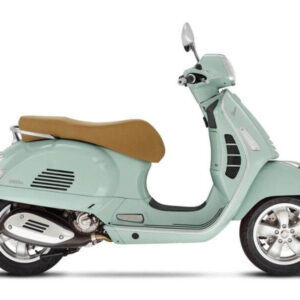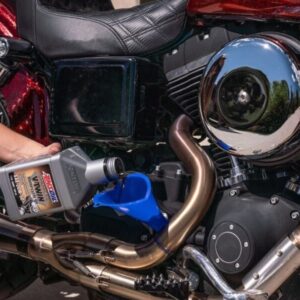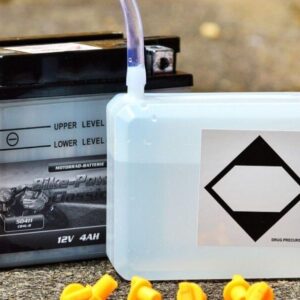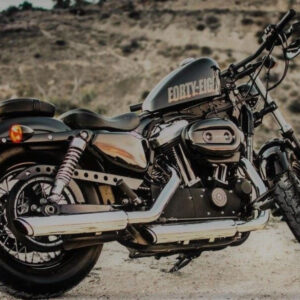What does CC stand for in bikes? Buying a two-wheeler can be confusing. Considering there are various factors you should consider when buying the right two-wheeler, it may be possible that can easily leave you in a dilemma. Also, not everyone who purchases a two-wheeler uses it for the same purpose.
Some use it for city commutes, whereas adrenaline junkies buy it for performance motor sports. Design, power output, weight, are some of the factors that are checked when buying one. Another such factor is the cubic capacity, often abbreviated as “CC”.
What Does CC Stand For In Bikes?
Cubic capacity or CC of the bike is the power output of the engine. The cubic capacity is the volume of the chamber of the bike’s engine. Higher the capacity, larger the quantity of air and fuel mixture compressed to produce power. This larger compression of the air and fuel mixture results in a higher power output.

Different bikes have different capacities of engines, beginning from 50 CC all the way up to 1800 CC on some sports cruisers. This cubic capacity of the engine is a determining factor in understanding how much output the engine can produce in terms of torque, horsepower, and mileage. What’s more, it also influences the bike insurance premiums.
The Engine Capacity’s Impact On CC
The space or the volume available inside the tank of an engine is called the engine capacity. The room inside the engine accommodates the air-fuel mix for combustion. The bigger the space inside the engine, the more infusion it can accommodate.
Large bikes or superbikes usually have bigger containers to help them produce more power and have extra fuel space. The higher the engine capacity, the more you will spend on fuel. Bikes with smaller engine capacities are more efficient and give more mileage.
Engine capacity determines the engine outputs like mileage, power, and torque. A larger cylinder provides larger combustion space, resulting in better power output. The amount of power generated by the engine is directly proportional to the amount of fuel used by the engine. Higher fuel consumption leads to lower mileage.
How Does CC Impact Mechanical Power?
There are two engine cylinders:
- Wide but short, referred to as short strokes.
- Narrow but deep, referred to as long strokes.
The short-stroke engine moves faster due to the pistons with a larger diameter. These pistons travel a short distance and produce more power quickly.
At the same time, long-stroke engines have narrow pistons that travel further while making more torque than power. The heat energy inside the cylinder pushes the piston, which converts into pressure. The process, as mentioned earlier, results in a mechanically powerful engine.
The linear motion of the pistons is converted to rotational motion by the crankshaft, transmitted to the clutch and gearbox, and transferred to the rear wheel. This is the primary mechanism behind a bike, and the cylinder’s shape and capacity play a considerable role.
Is Your Bike’s Higher CC Increasing Your Insurance Premium?
Many factors come into play during the calculation of insurance premiums on vehicles. The cubic capacity of your bike is one such parameter. This is why people pay different insurance premiums for the same two-wheelers. The bike model plays a huge role in determining the insurance premium.

Other automakers have separate price tags; therefore, the insurer’s risk differs, and so does the premium. Another factor directly proportional to higher engine capacity is the higher cost of repairs and hence, a higher premium.
Does Higher CC Mean Better Speed?
The cubic capacity of the cylinder determines factors like horsepower and torque. So, the short answer to this question is, yes! A motorbike’s acceleration and speed can be upgraded with a higher cc engine.
An important point to remember here is the relationship between more significant machines and lower fuel economy. So, if you care about mileage, a lower cc bike would suit your needs better.
However, there is a twist here. A short-stroke bike with a lower cc can produce more power than a long-stroke bike with a higher cc. Therefore, the shape of the engine matters when it comes to assessing the bike’s power.
How Many CC’s Are In 1 Hp?
It’s easy for engine enthusiasts to calculate the horsepower in your motorcycle based on cc’s. You can find out how many cc’s are in 1 hp by dividing or multiplying by 15. Basically, every 15cc equals 1 hp. For example, a 150cc motorcycle engine has 10 hp.
According to CarsGuide, there’s a formula for getting the volume of a cylinder too. You need the diameter, or bore, of the cylinder and the swept volume of the cylinder.
The swept volume is the stroke, or how far the piston travels up and down inside the cylinder. Then multiply the bore times the swept volume. Take this figure and multiply it by the number of cylinders, and that is the capacity.
How Motorcycle Engines Work?
Like those in most cars and trucks, motorcycle engines are internal combustion engines. The engine first sucks in fuel and air, it ignites the gases under pressure, the air and fuel combust, and the exhaust pushes them out. That process takes place inside the cylinders.
Cylinders with a larger volume, or higher cc’s, allow more air and fuel into the cylinders at once. This means more power can be generated. Motorcycles are categorized into classes based on cc’s. A lightweight bike is 50cc to 350cc, a middleweight bike is 400cc to 950cc, and a heavyweight motorcycle is 1000cc to 6500cc, according to Power Sports Guide.
How to Calculate A Bike’s CC?

Step 1.
Look for the stroke and bore specifications on the bike’s engine. These pieces of data are also listed in the owner’s manual in the “Technical Specifications’ area (in most cases).
Let’s take the Kawasaki KZ750 1976 as an example, which has a stroke and bore measurement of 78 x 78 mm.
Extra – for those who want to understand what these numbers imply: The bike’s diameter (cylinder engine bore) is 78 mm. Meanwhile, the piston strokes (from the piston top to the cylinder bottom after the piston is pushed to the stroke’s lower section) are also 78mm.
Step 2.
Multiply the bore measurement against itself. Then keep multiplying the result with the stroke and 3.141593. Return to the Kawasaki example above, and we have 78 (bore) x 78 (bore) x 78 (stroke) x 3.141593 = 1490849.241336.
Step 3.
Count how many cylinders your engine has, then divide the results in Step 2 by that number. Let’s say a Kawasaki’s engine has two cylinders: 1490849.241336 / 2 = 745424.620668.
Step 4.
Divide your result in Step 3 by 1000. Once done, round it up to the closest number to conclude the total displacement of your engine:
745424.620668 / 1000 = 745.424620668 (conclusion: 745 cc).
Looking Beyond CC’s
So, what are the other factors besides cc’s that determine how a motorcycle performs? First, let’s talk about motorcycle weight. A big, chunky bike like a Honda Gold Wing needs a much larger engine than a super-light bike like a Kawasaki Ninja.
And conversely, when you put a Gold Wing-sized engine into a lightweight sport bike chassis, you get the ludicrous speed and acceleration of a supersport bike.
The interaction of body weight and engine displacement produces horsepower and torque, both of which are more useful than cc’s for evaluating how a motorcycle feels and rides:
- Torque is force applied at a distance. It measures the force of the combustion in the cylinders, applied to the length of the crankshaft.
- Horsepower is torque multiplied by RPM. It measures how fast the engine does work (i.e., moving the motorcycle). A motorcycle’s horsepower can be increased through various techniques, such as manipulating gear ratios to use torque more efficiently.
If you had to choose one measurement to learn about the characteristics of a motorcycle, horsepower would be a good choice. But note that all of this is a simplified explanation, and these metrics have complex interactions that gearheads can spend years mastering in the garage.
Finally, we can’t forget the intangibles, like how a motorcycle fits the rider’s body and whether its controls are intuitively placed for the rider. These are important for any vehicle, but they’re critical for a motorcycle, where the rider and the vehicle are much more physically intertwined.
FAQs
What is the advantage of higher CC in a bike?
A bike with higher CC means more mixture of air and fuel in the engine leading to a powerful output.
Can CC affect bike speed?
While CC may not affect the bike speed, it does affect the overall performance of the bike in the longer run.
How does the CC affect the cost of the bike?
A bike with a higher CC costs more due to the bigger engine being used to produce more power and torque.
Above is information about What does CC stand for in bikes? that we have compiled. Hopefully, through the above content, you have a more detailed understanding of The engine capacity’s impact on CC. Thank you for reading our post.

